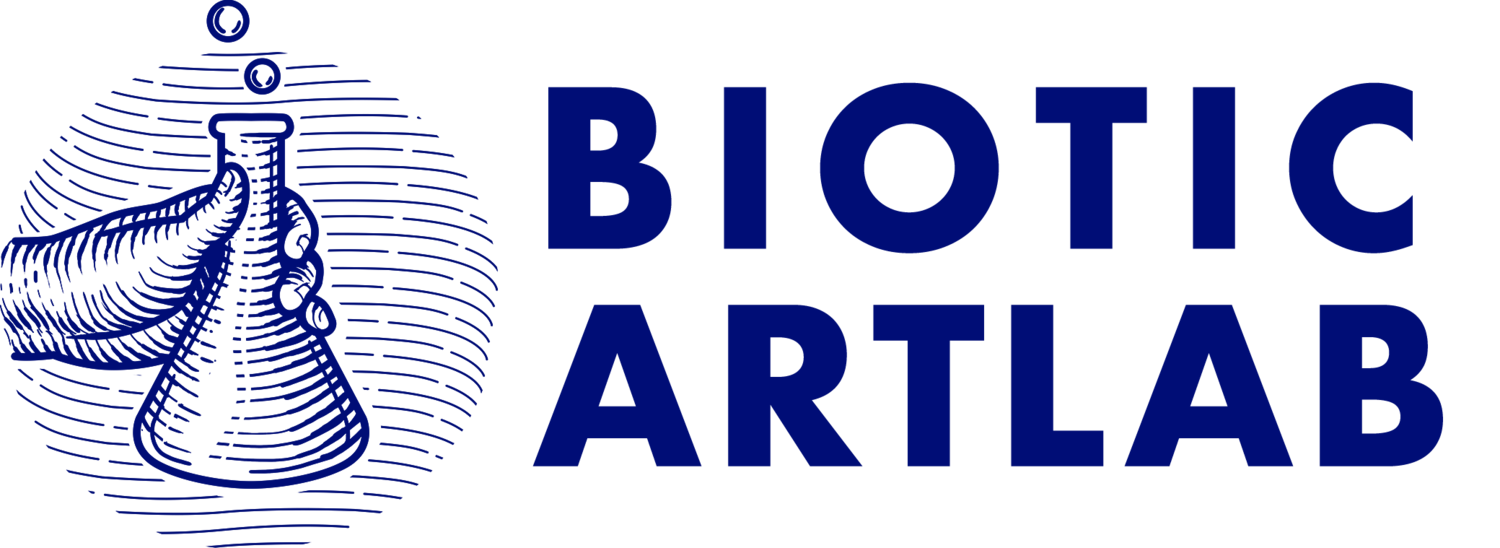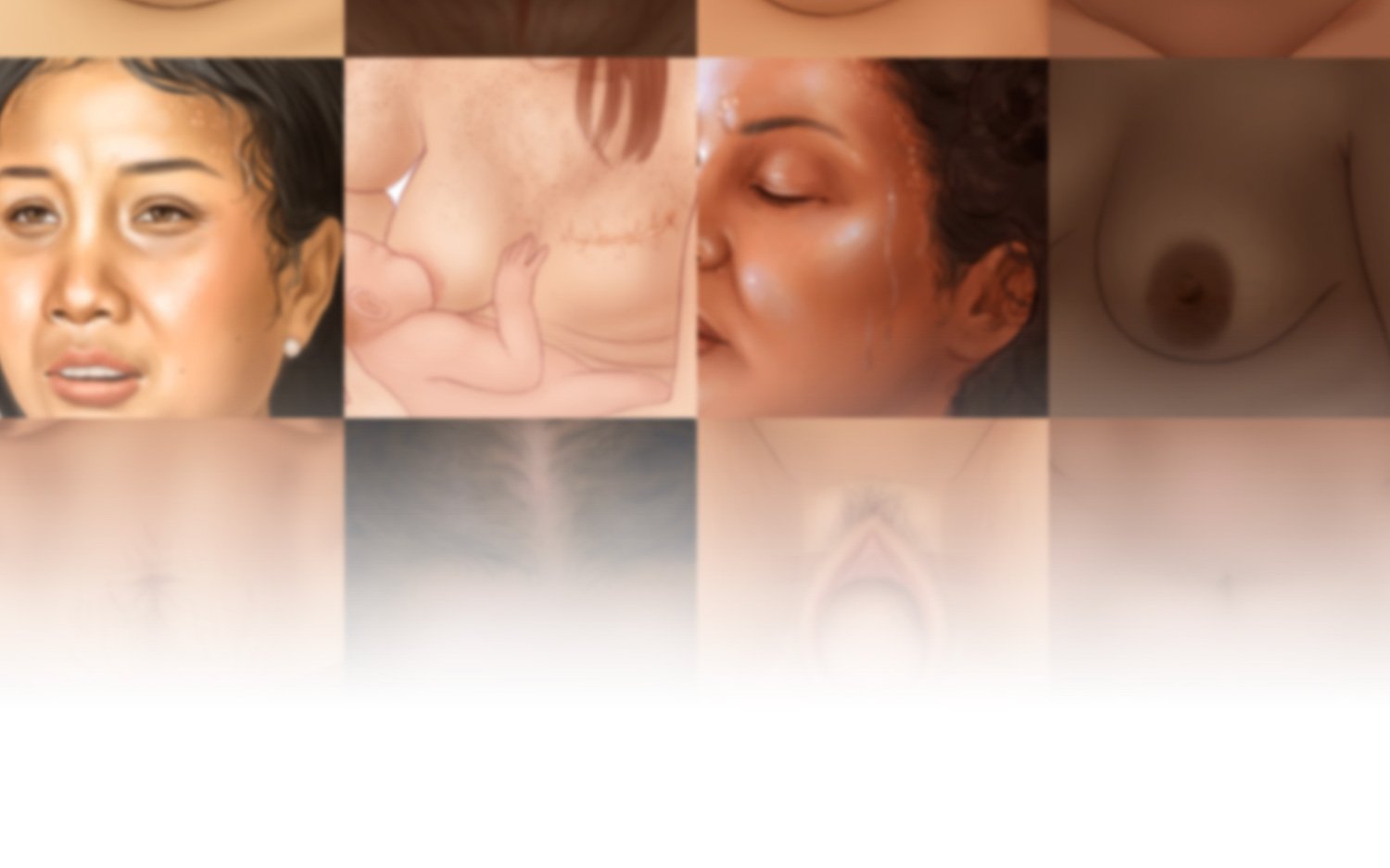
Reframing Revolution
Scroll down to learn more about our work on creating a collection of medical illustrations that address the lack of representation in women’s healthcare, celebrates the complexities of motherhood, and reflects the diversity of women.
Client: Peanut
When Peanut approached us to create a collection of medical illustrations targeted towards women’s healthcare, we had to pinch ourselves to make sure we weren’t dreaming. Historically speaking, visualizations in healthcare have predominantly shown “normal” white, athletically built, young, male and female anatomy - an act that completely disregards the full range of diversity that exists in reality. The true reality is that there is no normal.
Peanut is an app and social network that connects women who are at similar stages of life to each other - from fertility, pregnancy and motherhood through menopause. Together with Peanut, we sought to tackle the issue of diversity and inclusion in representation within medical illustrations. Representation in medical illustration is crucial as it helps educate not only the public but also our healthcare providers on how medical conditions impact women differently - from how c-section scarring appears differently on different skin tones to jaundice in babies of different ethnicities.
01 - Overview
Artists:
Margot Ceelen
Tiffany Fung



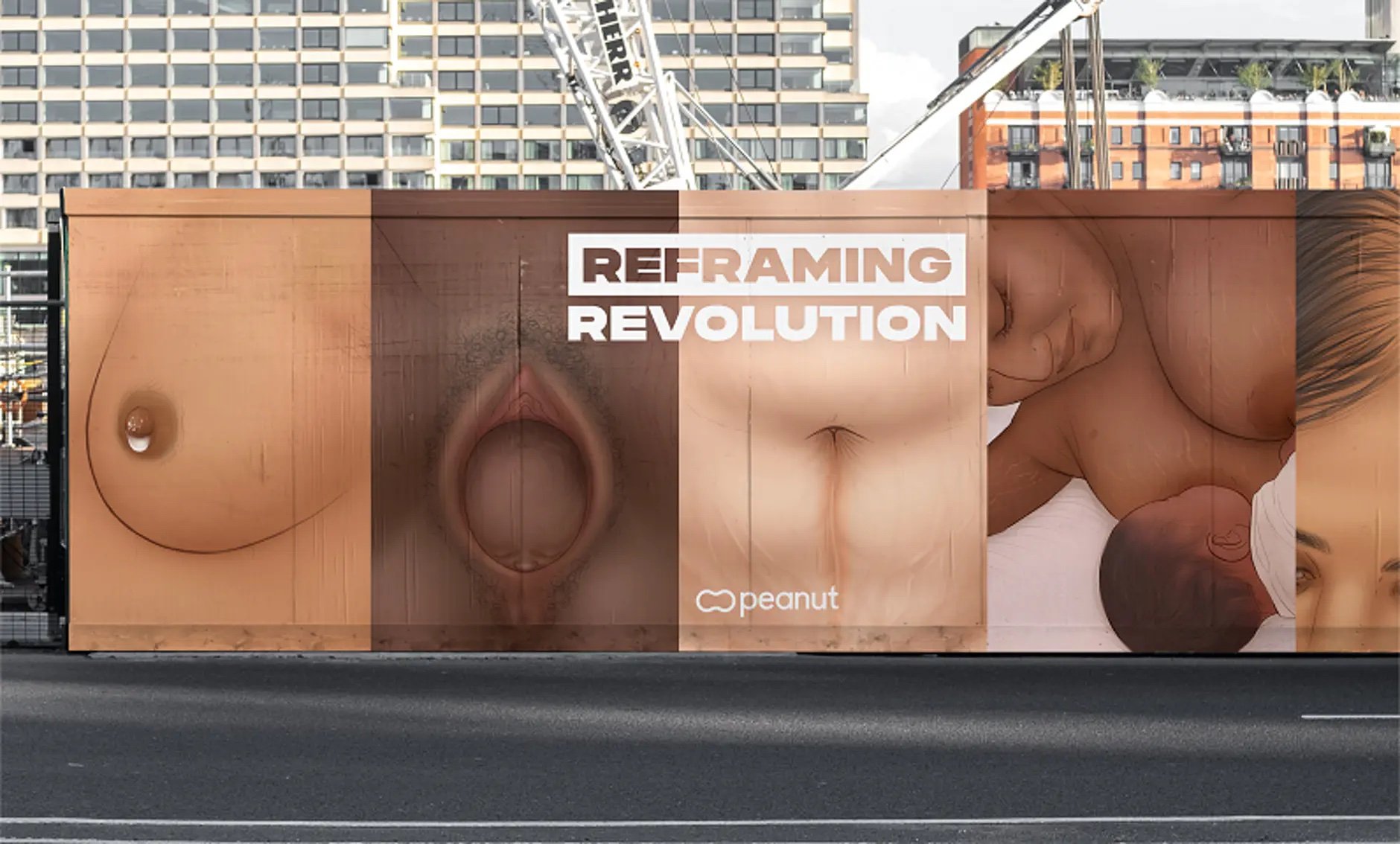
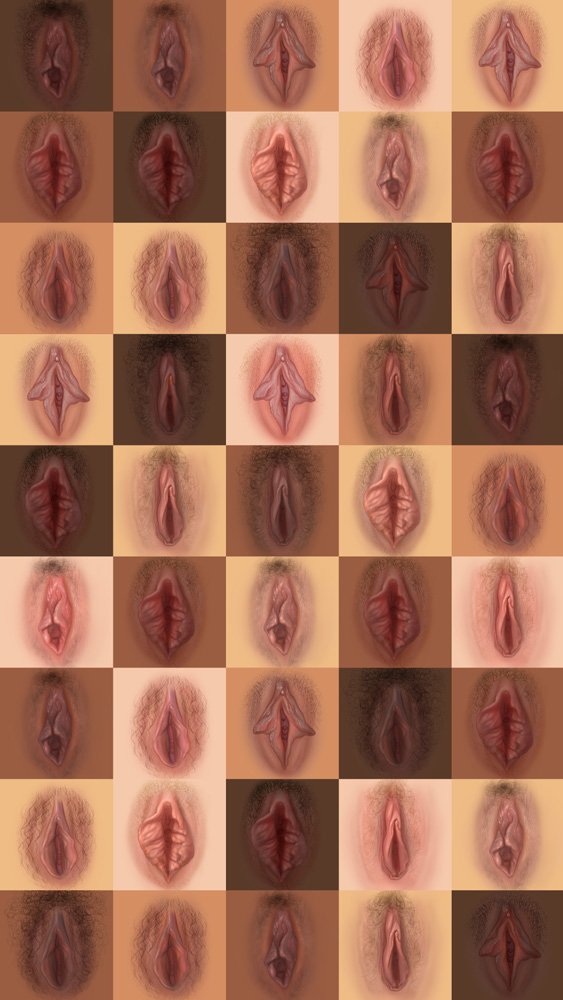


02 - What is the Reframing Revolution
The Reframing Revolution is a free digital gallery that serves to accurately reflect the diversity of age, ethnicity, body types of women on topics including:
IVF Bruising
PCOS
Linea nigra
Pregnancy breast changes
Ectopic pregnancy
Vaginal birth
Stillbirth
Postpartum body
C-section
Jaundice in babies
Breastfeeding
Hair loss
Hot flashes
Vulvas
Download available HERE
03 - Our Solution ✨
There is no one size fit all solution for being inclusive except to do the research and fully represent the rainbow spectrum of diversity that exists. The full gallery is available, royalty-free for women, media and the medical community to adapt into practices, journals, and more.
Download available HERE
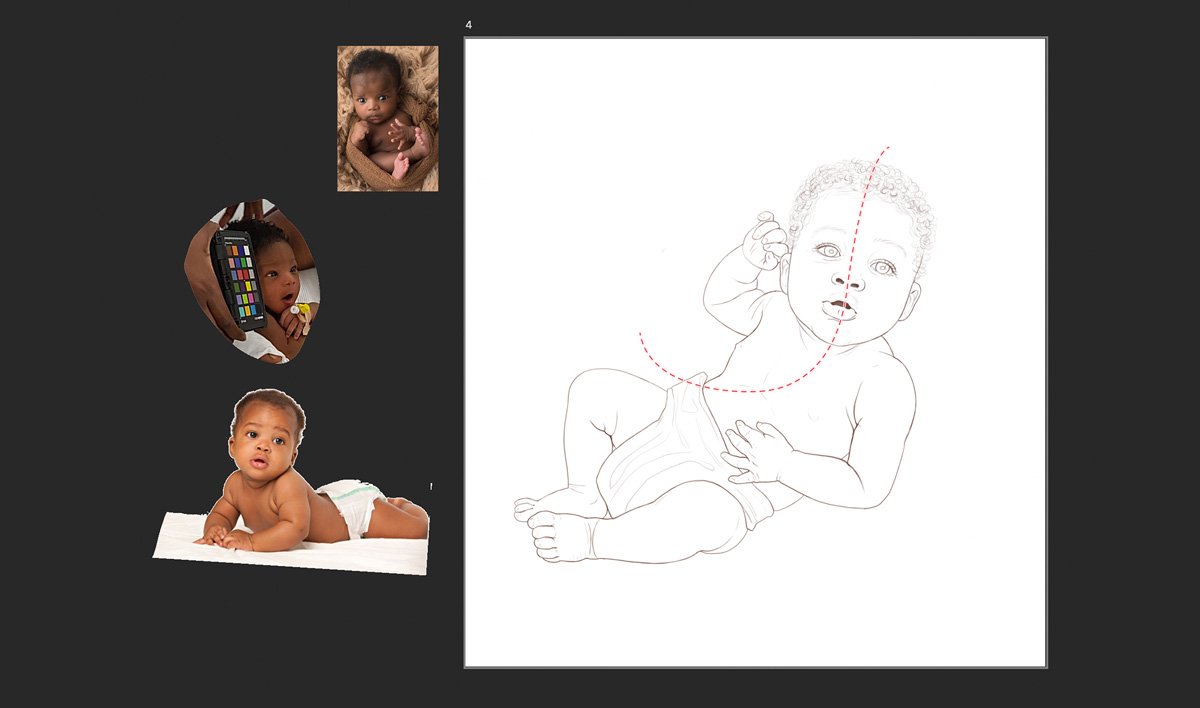
Step 2: Initial sketch. Once an initial sketch has been approved, we refine the lines. As you can see, our reference material is always handy.
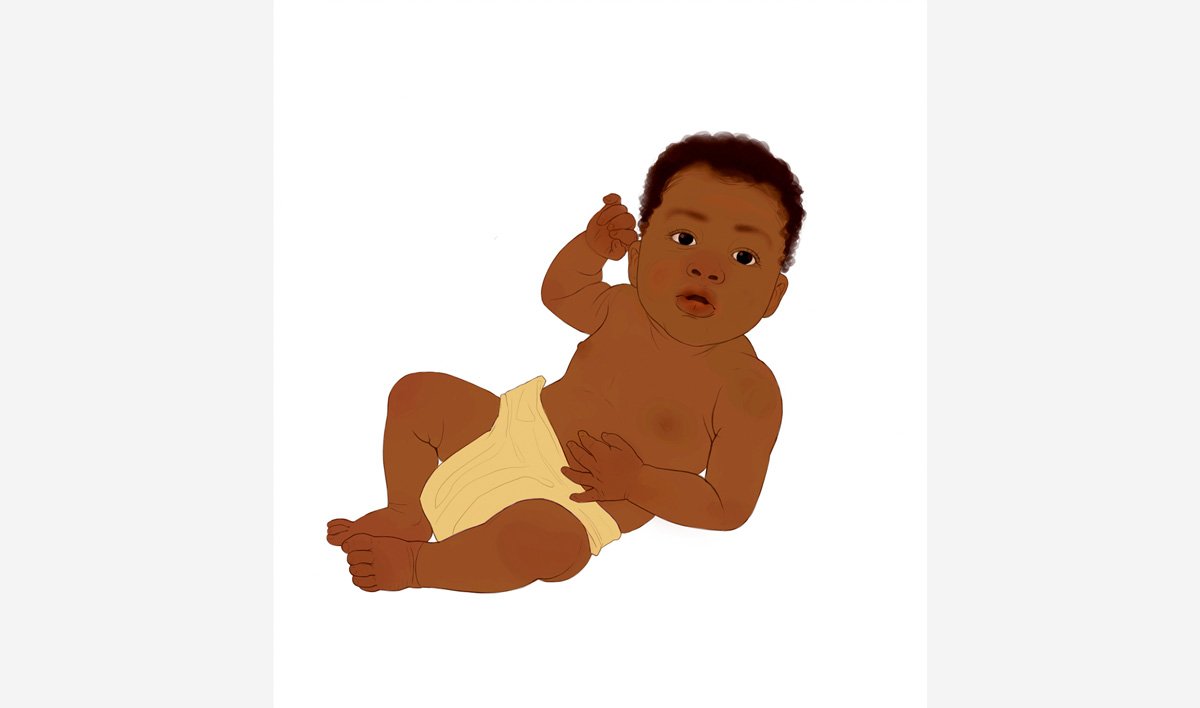
Step 3: Fills. We quickly paint in general fills. Here we can see the illustration begin to take on life.
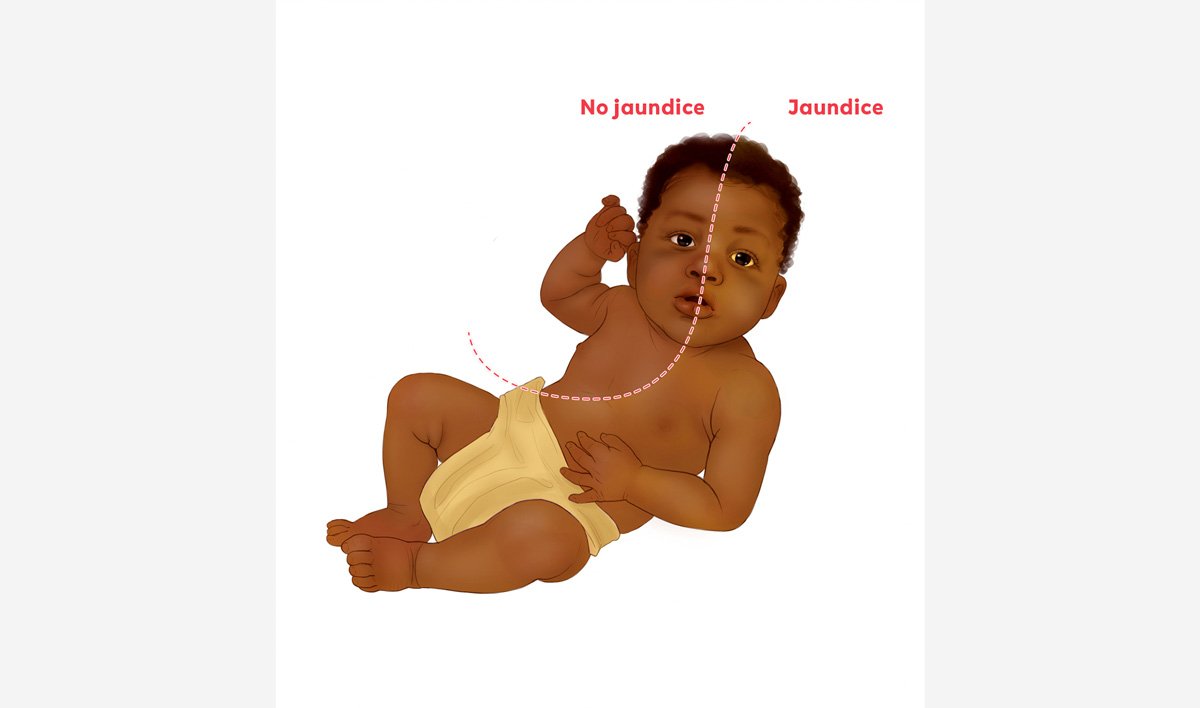
Step 4: Layout and details. Here is the refinement step. We add in shading and highlights, which differ from skin tone to skin tone. Light interacts differently depending on the shade of your skin!

Step 5: Final work. Diversity means doing the work and representing real subjects. Here, we visualized how jaundice shows up in the skin of newborn babies of different ethnicities.
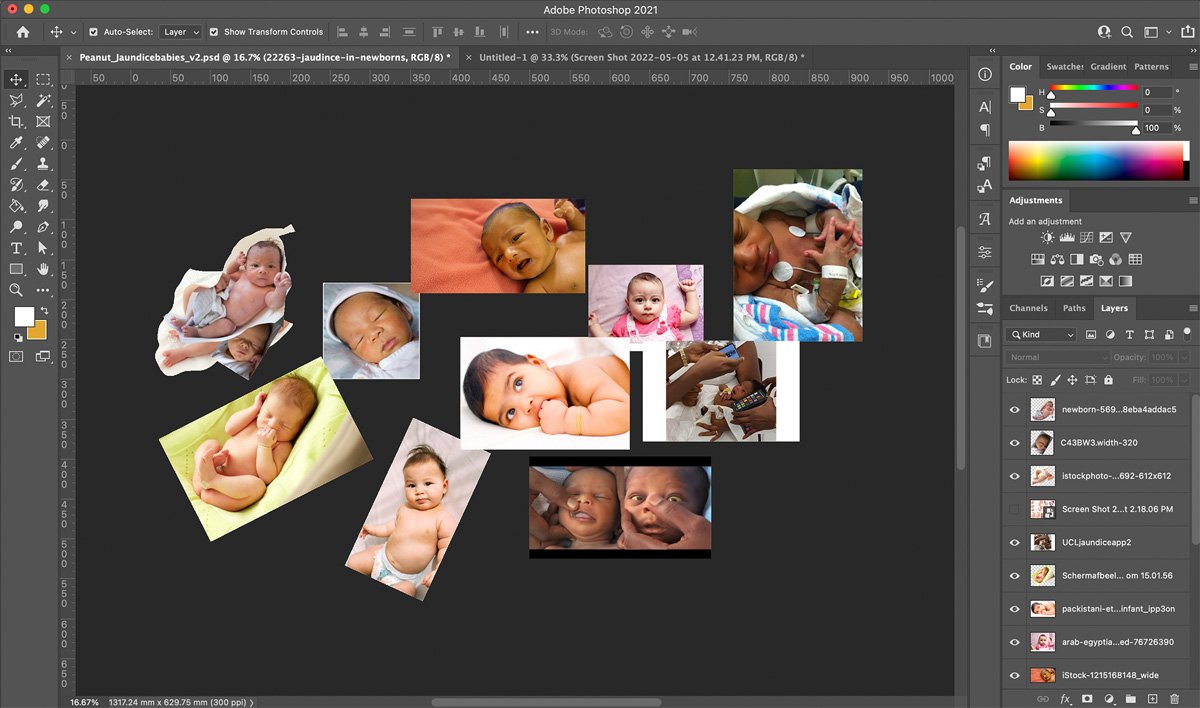
Step 1: Reference is key. We make sure keep thorough references on hand to ensure that our illustrations reflect the diversity that exists in reality of our subjects.
Let’s Chat
Are you looking to create a medical illustration library? Reach out to us and we can start the conversation.
